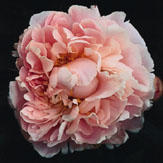 Paeonia
Paeonia
The herbaceous Paeonies should not be confused with the tree Paeonies.
Paeonies may not grow in the hotter areas of Queensland, northern NSW and West
Australia.
There probably isnít a more important or rewarding flower than Paeony. It
has been grown in China for twenty five hundred years.
One great asset Paeonies have is a very long life - there are plantings in
Asian temple gardens 100 years old and more. One reason for their long life is
that they have no natural enemies, not even man. They have also been a symbol
of beauty through the centuries, and their colours, which are many, and their
forms are sublime.
Culture:
Paeonies are not the least finicky about soils, but it make sense, when
planting a very long lived plant, to get things off to a proper start.
To do this, select a well drained site in full sun, then dig a hole 60 cm
in diameter and 30cm deep. Mix in as much as a large bucket of pure humus or
screened compost and add to this 500g of bonemeal or other general fertiliser.
Paeonies prefer soil that is neutral and slightly alkaline, but are tolerant
of a wide range of soil acidity. A handful of dolomitic limestone mixed with
the prepared soil will help assure their preference. Do not use peat moss or
cow manure in any form in the planting.
Plant the eyes 4-5cm below the ground level, taming the soil firmly around
the roots without damaging the eyes. Paeonies are great feeders and should be
fertilised annually after blooms, though they will go quite happily for years
without extra food. A handful of wood ashes they also like occasionally. They
sulk if grass grows to densely around them, but come back quickly when it is
removed.